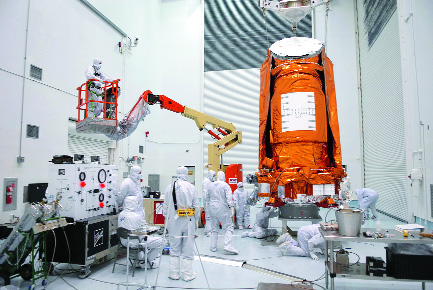Kepler, Nasa’s vaunted planet-hunting space telescope, has run out of manoeuvring fuel and is being retired, the space agency announced on Tuesday.
After nine and a half years in orbit, 530,506 stars observed and 2,662 planets discovered around other stars, the little spacecraft will be left to drift forever around the sun. Astronomers mourned the loss but celebrated a mission that changed their lives and enlarged the universe and its possibilities.
“Kepler has truly opened a new vista in astronomy,” said William Borucki, a physicist at Nasa’s Ames Research Center in Mountain View, California, who led the Kepler mission until his retirement in 2015.
“We have shown there are more planets than stars in our galaxies.”
Many of these planets, he said, may be just warm enough that they could have liquid water on their surface, “a situation conducive to the existence of life”.
Kepler’s retirement marks just the beginning of a quest to end humankind’s cosmic loneliness. It is an effort that will define the next half-century of Nasa science, as a new generation of spacecraft and instruments searches for signs of life on the ocean worlds orbiting Jupiter and Saturn, in the sands of Mars and on the rocky worlds that are now known to orbit nearby suns.
Nasa’s new space observatory, the Transiting Exoplanet Survey Satellite, or Tess, has already taken up the search for planets in the nearby cosmos, and giant telescopes both on the ground and in space are being designed to detect and observe exoplanets — planets that circle stars outside our solar system.
“The search for planets is the search for life,” said Natalie Batalha, a longtime Kepler mission scientist now at the University of California, Santa Cruz, during a conference in 2017. “These results will form the basis for future searches for life.”
Many theories and experiments aspire to transform our view of the universe, but the Kepler mission actually did so. Three decades ago, astronomers could not say reliably whether there were planets around other stars. Now, Nasa’s hashtag “moreplanetsthanstars” says it all: the universe is home to more planets than stars, with billions of potentially habitable planets just in our own galaxy. Sent aloft in 2009, Kepler discovered some 5,580 possible planets by staring intently at the stars in a tiny patch of the Milky Way.










